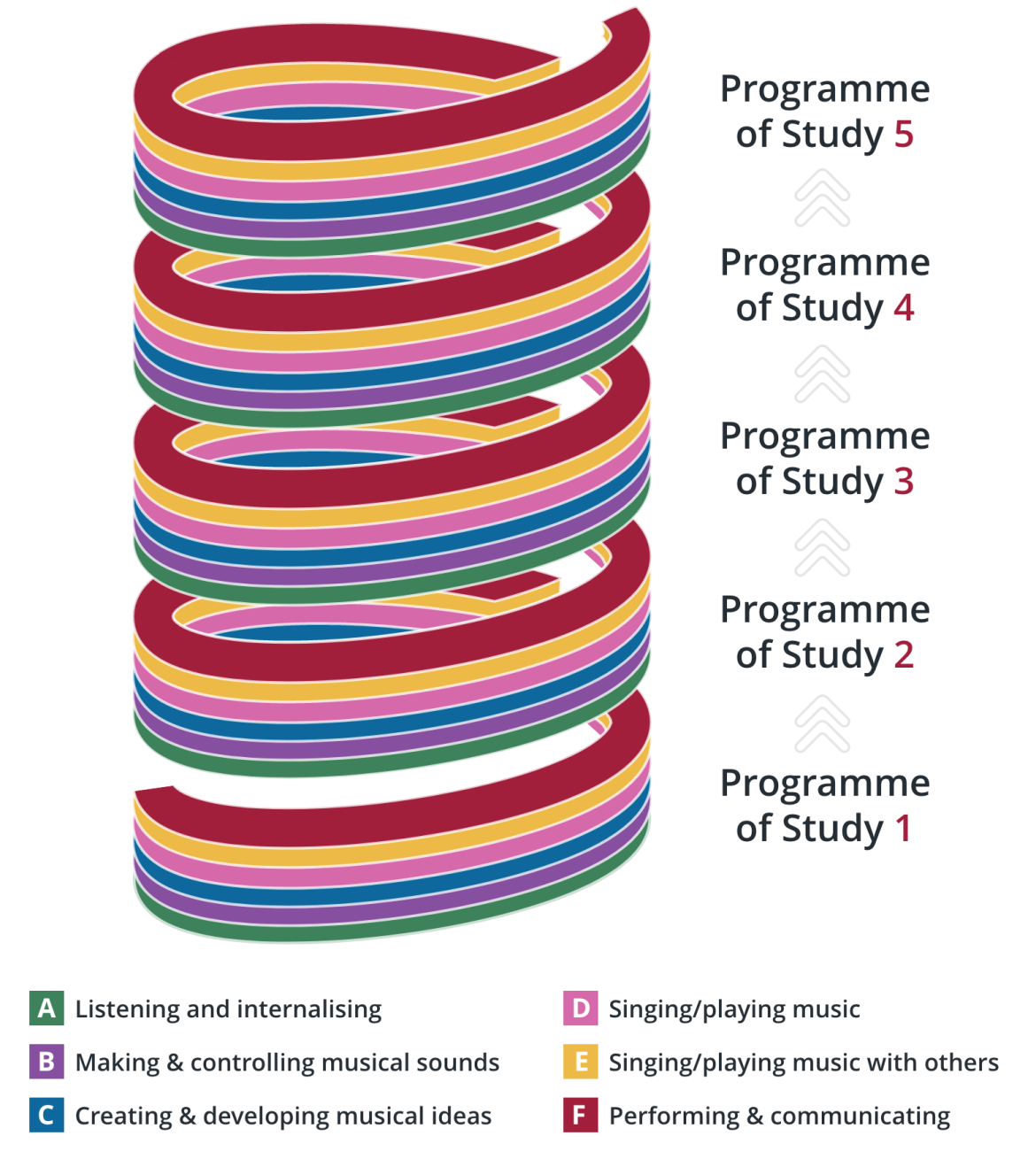A Holistic Approach to Teaching and Learning
The six interrelated areas should be viewed as a whole and not as hierarchical. The intention is that together they offer teachers sufficient flexibility to plan interrelated activities that are true to the intrinsic nature of music. This holistic approach to planning is central to A Common Approach and is reflected throughout the resource.

An example of teaching a piece holistically:
- perform the piece to learners and discuss with them the overall effect
- jointly analyse the piece, i.e. in relation to mood, character, style, structure, and relate it to the context of its origin
- teach the piece to learners, breaking it into manageable chunks so that a little is learnt at a time
- demonstrate aspects of the piece to learners, e.g. shaping of phrases, expression marks, and encourage them to use their aural and reading skills as the piece is absorbed
- scaffold learners’ singing and playing by singing/playing along and accompanying if appropriate
- make use of and devise (as necessary) appropriate exercises and scales related to the piece to help learners acquire technical accuracy and control
- encourage learners to explore expressive possibilities from the outset, including improvising on musical features
- assess progress and identify achievements and areas for improvement so that learners develop the skills to identify what needs attention, how to identify tricky passages and how to make improvements, taking into account the individual’s learning style
- set short-term targets for practice at home, structuring the amount of time to cover technical and musical skills and establish a daily routine for learners
- build up learners’ fluency within a realistic time-frame (according to individual needs)
- revisit technical and musical problems in lessons and suggest ways in which learners can practise independently, developing their resilience, including the use of recordings and backing tracks
- help learners to refine their musical performance and convey the character of the music
- teach learners how to improvise/compose a short piece based on ideas from the original piece
- where possible, listen to performances of music in the same genre and discuss
- arrange an informal and/or formal assessment as appropriate, e.g. learners perform to teacher or to others in a concert or examination, and reflect on how they feel about the performance afterwards